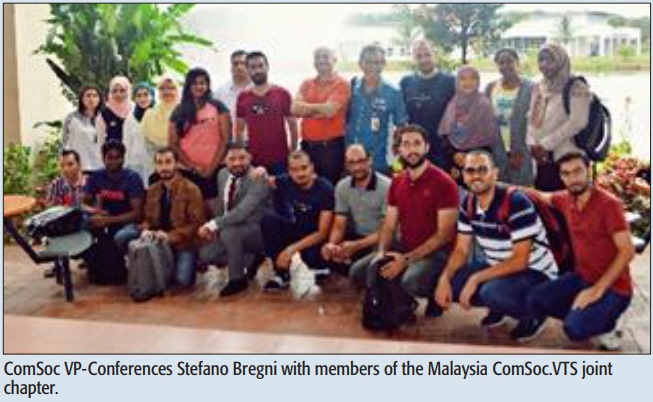
The ComSoc/VTS Joint Chapter was honored with the visit of the IEEE ComSoc Vice-President for Conferences, Stefano Bregni, on 13 October 2018. He met the ComSoc/VTS Executive Committee members to discuss our development and planning for the ensuing year. As part of his visit, he gave an insightful talk to members on ComSoc’s vision, mission, its structure and mechanism, and how to maintain a high level of vibrancy in the Chapter. This kind of information is very helpful and encouraging for members to plan their future activities and make the chapter vibrant while bringing value to the membership. About 20 members attended the talk.
Apart from the membership development activity, the Joint Chapter also organized several technical talks on NOMA and 5G, particularly:
-
Technical Talk by Prof. Huseyin Arslan on Wireless Radio Access for 5G and Beyond on 21 September 2018.
-
Technical Talk on Multiple Access for 5G: A New Look at NOMA by Prof. Hikmet Sari on 8 June 2018.
-
Distinguished Lecture Talk (DLT) by Prog. Tony Quek on Augmented Intelligence for Future Networks & Communications and Foundations of Adaptive Fog Computing & Networking on 7 March 2019.
The talks highlighted emerging issues in 5G and beyond, especially in access technologies. More than 50 postgraduate students and ComSoc members benefited from the talks, esepecially in getting ideas and explanations on what could be the best research topics in wireless communications.

The talk by Prof. Quek highlighted the recent trend during the past decade which is to push various capabilities, such as computation, control, and storage, to the cloud. Such an over-dependence on the cloud, however, indicates that availability and fault tolerance issues in the cloud would directly impact millions of end-users. Such a cloud-centric architecture is not suitable for satisfying the demands of many delay-sensitive applications in future IoT. In viewing these challenges, the cloud is now “descending” to the network edge and diffuses among the client devices in both mobile and wired networks. Such a transition leads to the new paradigm of fog computing and networking. In the talk, an overview of fog computing and networking were discussed.
We look forward to hosting a few more technical talks in 2019 by renowned speakers in the areas of wireless communications, especially on issues pertaining to 5G and beyond, as Malaysia joins the telecommunication world to deploy 5G infrastructure and services in the country.